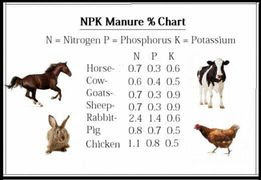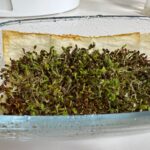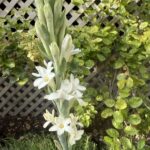While we would all love to grow food as naturally as possible, it is neither financially nor logistically possible for a home gardener to rely only on natural sources. Besides, unless we can control all the environment around us there will always be some cross-contamination from the adjoining gardens.
Therefore, I believe a judicious mix of both kinds of fertilizer is critical in growing the best vegetables and fruits we can, given our limitations of space, time and finances. Right, so here goes.
Fertilizers have macronutrients and micronutrients. The main macronutrients that we know are Nitrogen, Phosphorous, and Potassium. Nitrogen and phosphorous help the plants to create chlorophyll. Potassium helps in fruiting and flowering. Most formulations of NPK here- the little blue pellets have the three nutrients in equal measure, 12-12-17. There is another variant called Compo which has the formulation as 12-17-12 so more potassium. Once the plant is established we can add compo pellets that are slow-release to the soil to aid the flowering and the fruiting.
There are many other micronutrients that our plants need as well, Calcium, Manganese, Boron, Copper, and Iron to name a few. Most of these aid in the production of chlorophyll and are essential to the plants. In Dubai, we get a plant food called Phostogen, which is a good blend of all of the above. Mix and foliar spray as per instructions. Iron, Magnesium, and Calcium are required in greater quantities for certain plants. Roses, cucumbers, and hibiscus love Epsom salts. Add 1 tablespoon to a gallon of water and foliar spray or water the plants with it. Potassium nitrate can be used as a foliar spray once every 2 weeks during the flowering season. It is not to be used in the dormant season as it will burn the plants.
Now to come to the organic part. We can use our kitchen waste and our garden waste to reuse and harvest the nutrients that are in them. If we save our banana peels, Onion peels, eggshells, etc we can reuse them in a matter of days to fertilize our garden. The only rule we need to follow is that organic fertilizers need to be applied more frequently while inorganic or chemical fertilizers must be applied sparingly or at set intervals.
For nitrogen simply use your grass clippings or old pruned leaves and let it ferment with water in a bucket for 3-4 days. Add three times the quantity of water and water your plants with that. Use the rest in your compost. For potassium save your banana peels or overripe bananas, make a slurry out of them in a mixie and water your plants with that. Remember to dilute with double or more the quantity of water. You can also just dump the banana peels and the onions peels in a bucket, fill half the bucket with water, cover, and leave to ferment for a few days. After that, dilute the water or the teas as some people call it and water your plants with it- voila Potassium Sulfate. As a side note, Sulfur is important to the plants in seed formation as well as resistance to disease and pests.
Eggshells take a long time to break down enough so that the plant can access the calcium. Water from boiled eggs is great for watering your veggies as it has a high calcium content and helps in fruiting. Alternatively, you can wash and dry the eggshells and powder them and keep in a bottle. This powder can be added to the soil. I normally chop up my vegetable peels and dump them into my compost. Eggshells go there too. In the warm months, it takes 6 weeks for the compost to be ready. In December January it can take up to 10 weeks for the compost to be ready. Calcium Phosphate can be made at home.
Calcium phosphate recipe for flowering and fruiting from eggshells. What you need is:- 1 kg of eggshells. 2.5 liters of natural Vinegar. After you break eggshells into small bits grill the eggshells in a pan until the color becomes gold 95% and 5% black. Then add the vinegar to the eggshells in plastic containers and Ferment the eggs shells in anaerobic conditions for 21 days. Applications Rate Dilute 1:100 and spray the plant.
As a final note- fertilizers for IXORA. Ixora is a beautiful ornamental plant that tolerates the Dubai summer. It flowers once the temperature cools down and is gorgeous in spring. But it can be temperamental as it usually suffers from iron deficiency(Chlorosis) over the summer. For getting beautiful blooms and deep green leaves please dissolve 10 ml liquid iron and 5mg(1 teaspoon) of urea in 10 liters of water and water the Ixoras with this mix. Repeat 3 times every 10 days once every season preferably in October/November but can be done even until March. After that, it becomes too hot.
The photo below gives one a good idea of what kind of animal manure you can use in your garden and what are the NPK composition of each.








Recent Comments